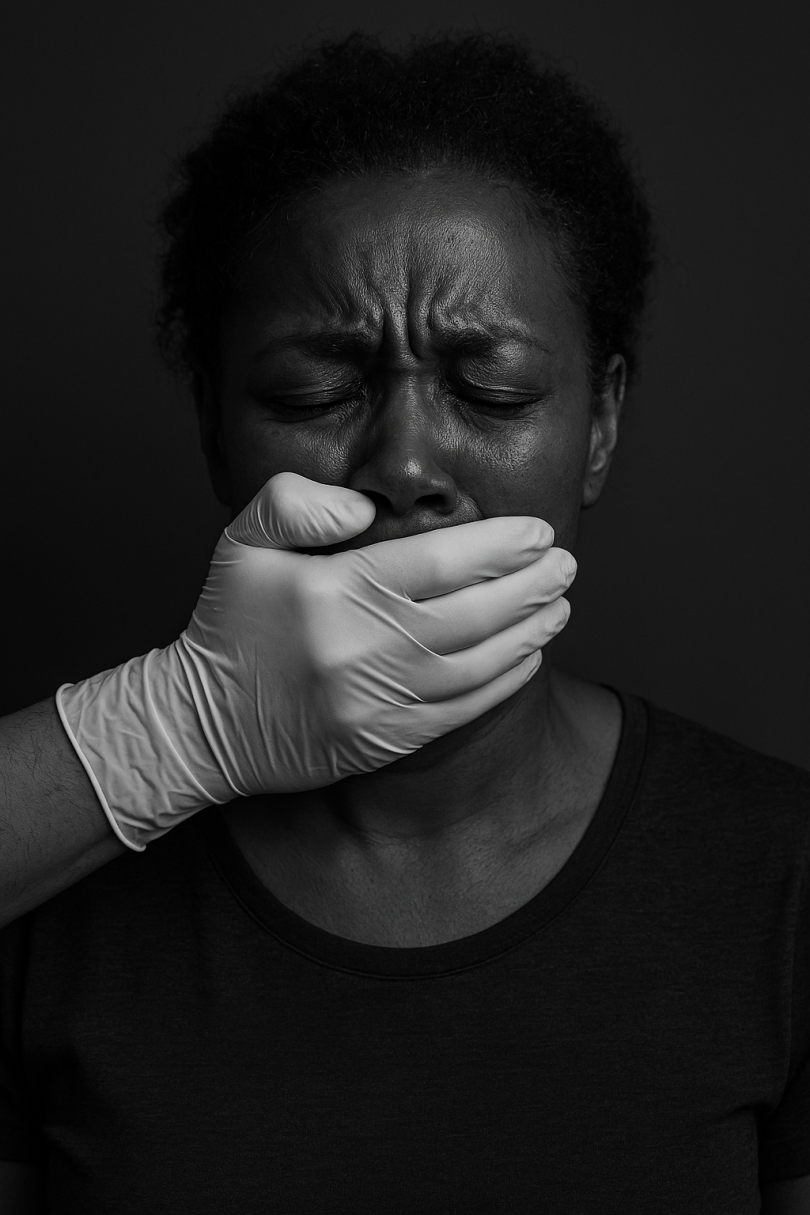People experience pain for many reasons, including injury, chronic illness, surgery, or conditions like fibromyalgia and arthritis. Unfortunately, though, pain is not always recognized or treated fairly—and too often, race, class, and gender shape who is believed, who is cared for, and who is left to suffer. For generations, the Black community in the United States has been presented with medical guidance shaped by exploitation, erasure, and skepticism. In short, no one believes us when Black pain is verbalized. Due to these historical injustices, our community has developed a deep mistrust of healthcare providers—so strong that many of us either choose to live with pain or turn to self-medicating rather than seek professional care.
During Pain Awareness Month, it is essential to examine these systemic and historical factors. Doing so helps explain why self-medicating remains common in the Black community, highlights the urgent need for culturally competent care, and emphasizes the importance of open, honest communication between patients and healthcare providers to build trust and promote real healing.
The History and Myth of Black Pain
One of the most persistent and damaging falsehoods in medical culture is that Black people feel less pain than white people. Originally used during slavery to justify forced labor and neglect, this myth has been funneled into modern medicine. Studies from a 2016 article published in Proceedings of the National Academy of Sciences, about 40% of white medical trainees believed that “Black people’s skin is thicker than white people’s,” and many thought Black individuals have less sensitive nerve endings–a direct correlation with why our community has been undertreated.
What’s disturbing is that this is hardly a relic of the past. Research shows that even today physicians underestimate Black patients’ pain 47% of the time, compared to 33.5% for non-Black patients. The consequences are profound: Black patients are 22% less likely to receive any pain medication than white patients, and these treatment disparities continue. This inequity is directly tied to why the opioid epidemic initially devastated white communities—particularly in rural, suburban, and working-class areas—more severely. Pharmaceutical companies targeted these populations in part because Black patients were less likely to be believed about their pain, and less likely to receive prescriptions in the first place
This unfounded, biased medical theory is still a deeply ingrained belief used to justify the mistreatment and neglect of Black patients—often with even crueler intentions.
For example, James Marion Sims, often called the “father of modern gynecology,” conducted experimental surgeries in the 1840s on enslaved Black women in Montgomery, Alabama, without anesthesia. He operated under the racist belief that Black people felt less pain than white people, using enslaved women as experimental subjects because their suffering was dismissed. While his surgical techniques advanced gynecology, they came at the cost of Black women’s autonomy and well-being. Sims’ legacy became publicly controversial, particularly after a statue of him was installed in New York City’s Central Park, sparking debate for glorifying a figure whose innovations were built on the exploitation of Black women.
The impact of Sims’ experiments went far beyond his own lifetime. The false belief that Black people feel less pain continued to influence medical practice, leading to the undertreatment of pain in Black patients and reinforcing long-standing healthcare disparities. This history of exploitation and racial bias created deep mistrust of the medical system within the Black community—a mistrust that still lingers. In recent decades, public debate over his statue in New York City’s Central Park has brought attention to how society remembers figures whose scientific achievements were built on human suffering, sparking calls to provide context, remove the statue, or replace it with memorials that honor the women he experimented on.
Regrettably, experiments on Black American bodies to measure pain tolerance did not end there. Consider, for example, our own US military. During and after World War II, the US military exposed thousands of soldiers—including Black soldiers—to mustard gas and other chemical agents in secret experiments, often without meaningful consent or pain management.
One Navy volunteer, pressured into the test, later suffered chronic hoarseness, migraines, and nervous disorders, with long-term health consequences—and no recognition or support from the Veterans Administration. The experiments were not only dangerous, but they were also racially guided. Studies compared reactions across different races, as if Black and white bodies responded differently by default—a pseudoscientific premise that denied individual suffering its humanity.
Such deeply unethical practices only compounded Black veterans’ mistrust. Those who served their country were left haunted and ignored, reinforcing the idea that their pain (and even their lives) were nonessential.
Self-Medication in Our Community
From false scientific claims to gynecological abuse to unethical military testing, these events are not isolated incidents but part of a continuous pattern in the US. Together, they form a larger history of medical abuse and neglect toward Black Americans. Over the years, this pattern has sent a horrible message to our community: Black pain is less important, less real, or even invisible. This history not only shapes how our community views the medical system but also fuels the deep mistrust many still carry today. As a result, many in our community turn to self-medicating, often taking personal risks rather than risk seeing a medical practitioner who may dismiss or disbelieve their pain. Common ways of self-medicating include, but are not limited to:
- Over-the-counter drugs like NSAIDs or acetaminophen can offer temporary relief—but overuse risks health complications
- Home and herbal remedies offer cultural resonance and comfort—but may hide serious underlying issues
- Alcohol or other substances may numb pain—but lead to addiction or health decline
Self-medicating, while understandable, can delay diagnosis, obscure disease progression, and worsen long-term outcomes. Remember, we aren’t self-medicating out of rebellion—for many in our community, it’s about survival.
Moving Forward
Pain Awareness Month offers a moment not just to acknowledge physical suffering, but to confront its historical and social roots. Remember, mistrust is not ignorance—it is history, validated by experience.
Here are 5 approaches to move forward and strengthen awareness of pain within the Black community—for both healthcare practitioners and Black patients alike.
- Educate healthcare providers about the history of bias within the medical industry against the Black community. Advocate for healthcare providers to take CME courses on cross-cultural communication and the history of medical racial bias
- Invest in culturally competent care, by supporting diverse providers and clinics, advocate for racial bias training, donate/invest in nonprofits, clinics and public health programs while influencing government policies by voting
- Bridge mental and physical health, recognizing that trauma and pain are inseparable. Most often, if we neglect our mental health it can manifest as physical health issues
- Empower community education by assisting in providing culturally informed education, accessible resources, and tools for self-advocacy with healthcare providers
- Cultivate trusted community networks—churches, grassroots groups, and peer advocates can connect people to care that honors their stories
Elevate Black Health understands how pain has been weaponized and affecting our mental and physical health. It is important to be your own and your family’s strongest advocate for safe and effective healthcare. Remember, it’s perfectly okay to seek a second, or even third, medical opinion.
Want to Learn More?
- Association of American Medical Colleges. How we fail black patients in pain. https://www.aamc.org/news/how-we-fail-black-patients-pain
- Healthline. Race and Medicine: 5 dangerous medical myths that hurt black people. https://www.healthline.com/health/dangerous-medical-myths-that-hurt-black-people
- PubMed. Racial bias in pain assessment and treatment recommendations, and false beliefs about biological differences between blacks and whites. https://www.healthline.com/health/dangerous-medical-myths-that-hurt-black-people
- UVA. Black Americans are systematically under-treated for pain. Why? https://batten.virginia.edu/about/news/black-americans-are-systematically-under-treated-pain-why
- ACOG. Recognizing Lucy, Betsey, and Anarcha. https://www.acog.org/news/news-articles/2021/02/recognizing-lucy-betsey-and-anarcha
- The New Yorker. Primary Sources: Operation delirium. https://www.newyorker.com/news/news-desk/primary-sources-operation-delirium








